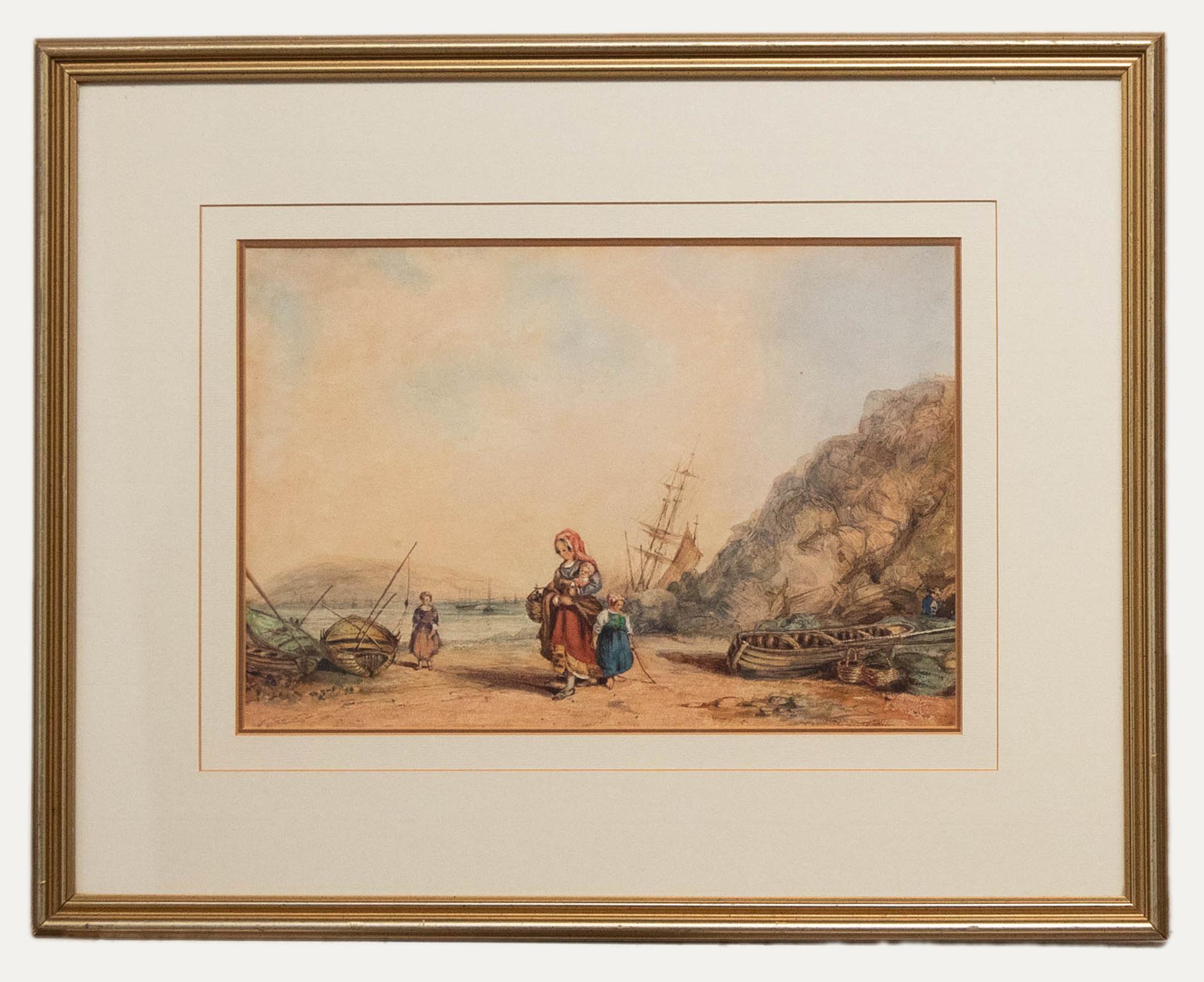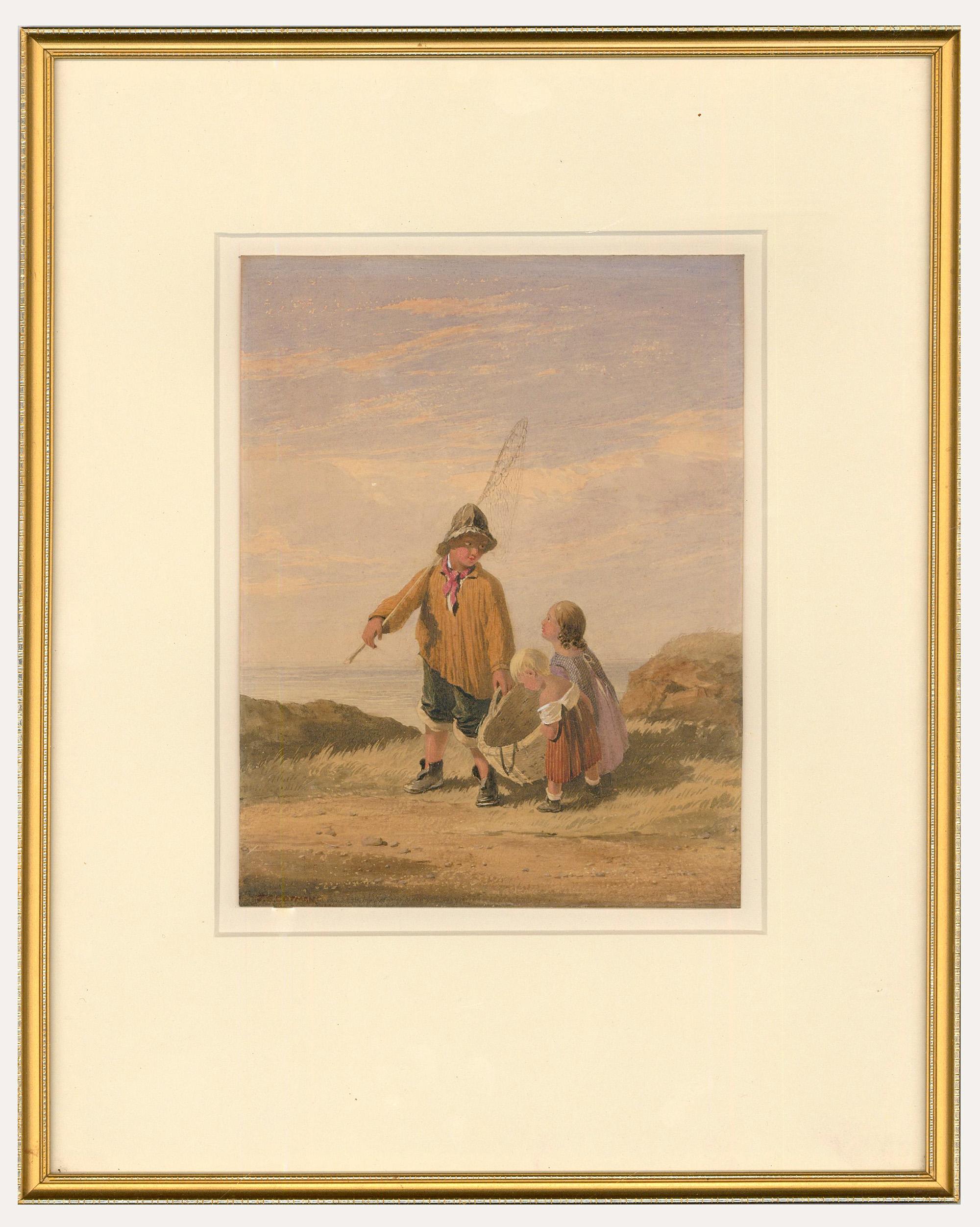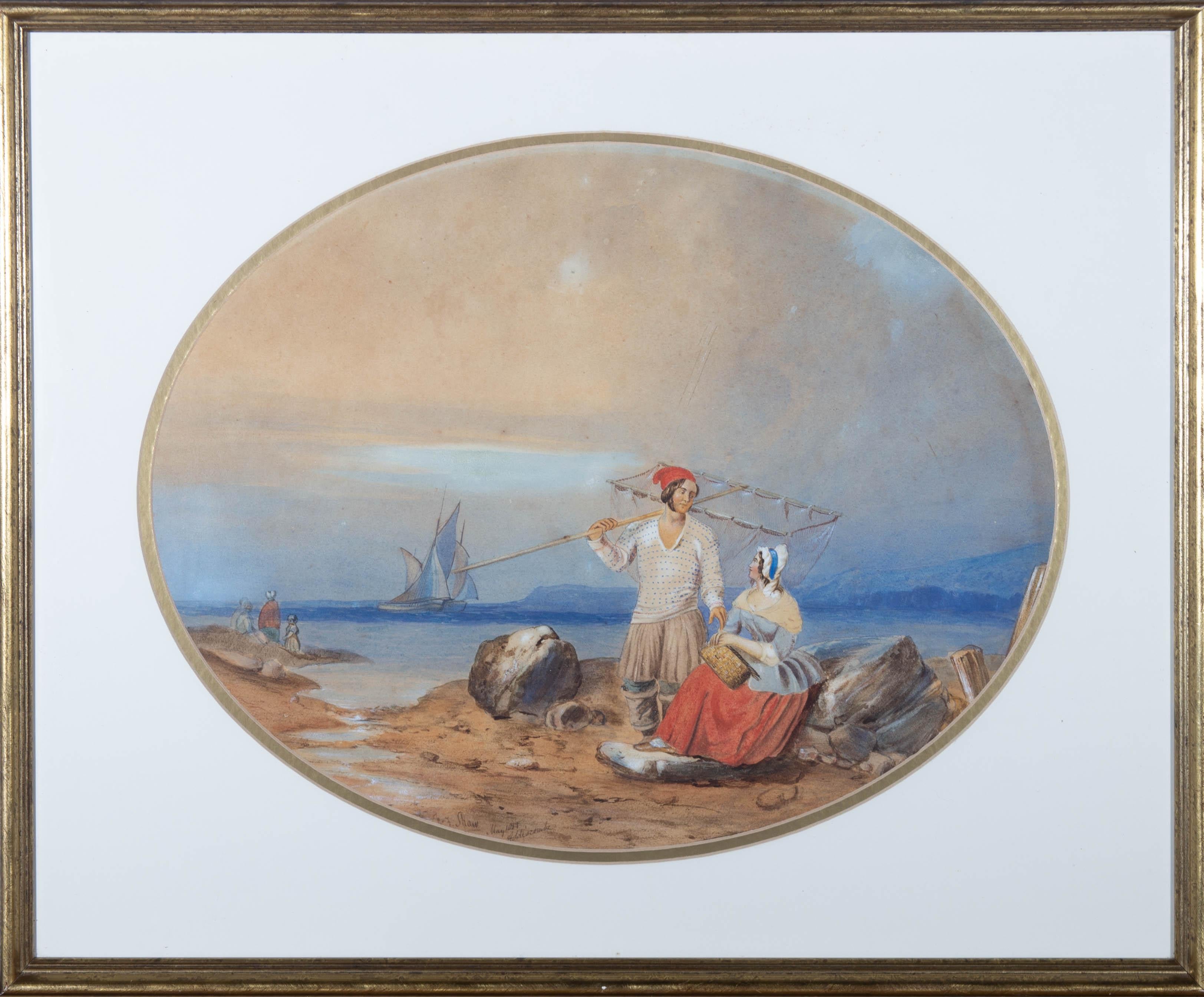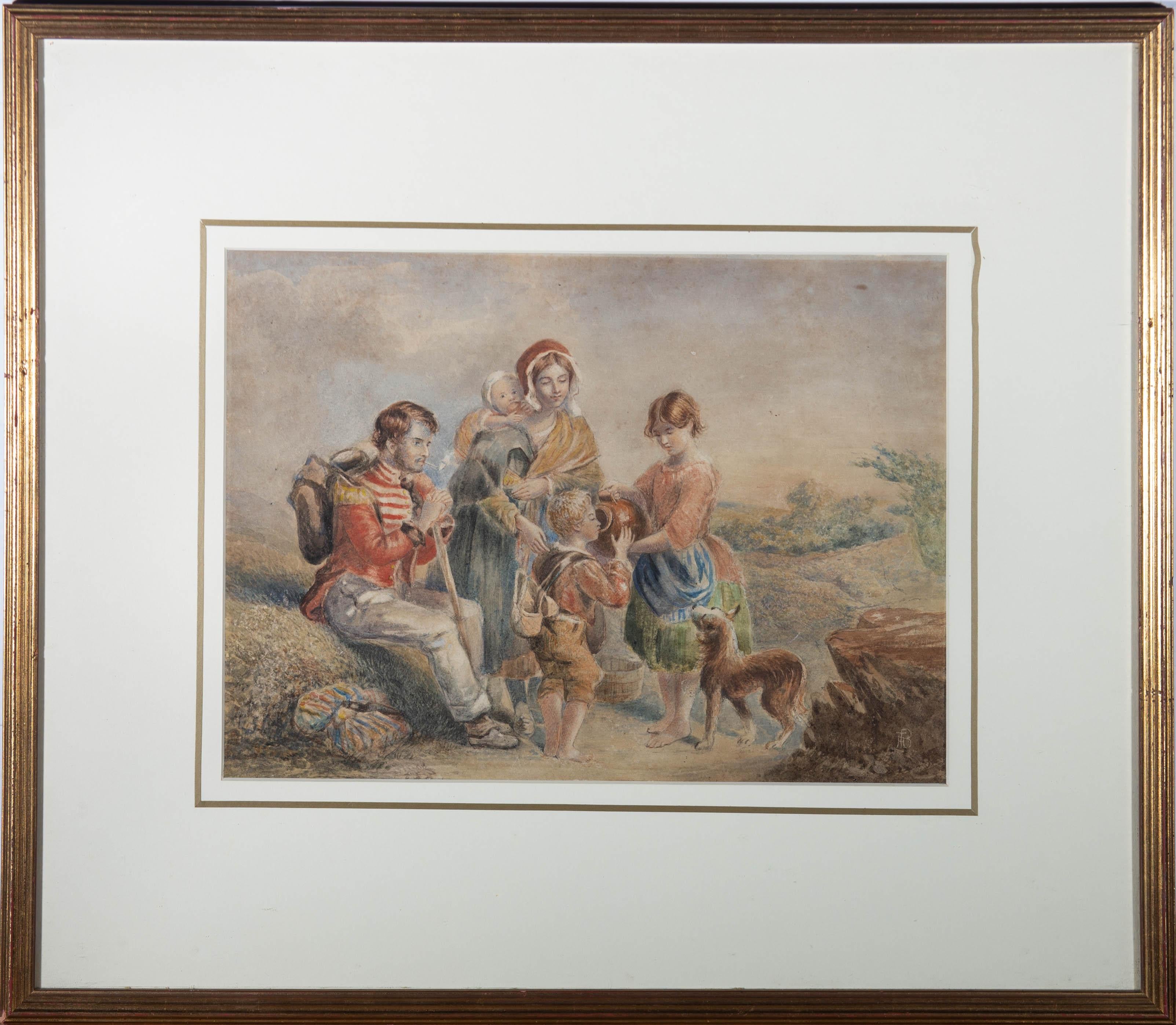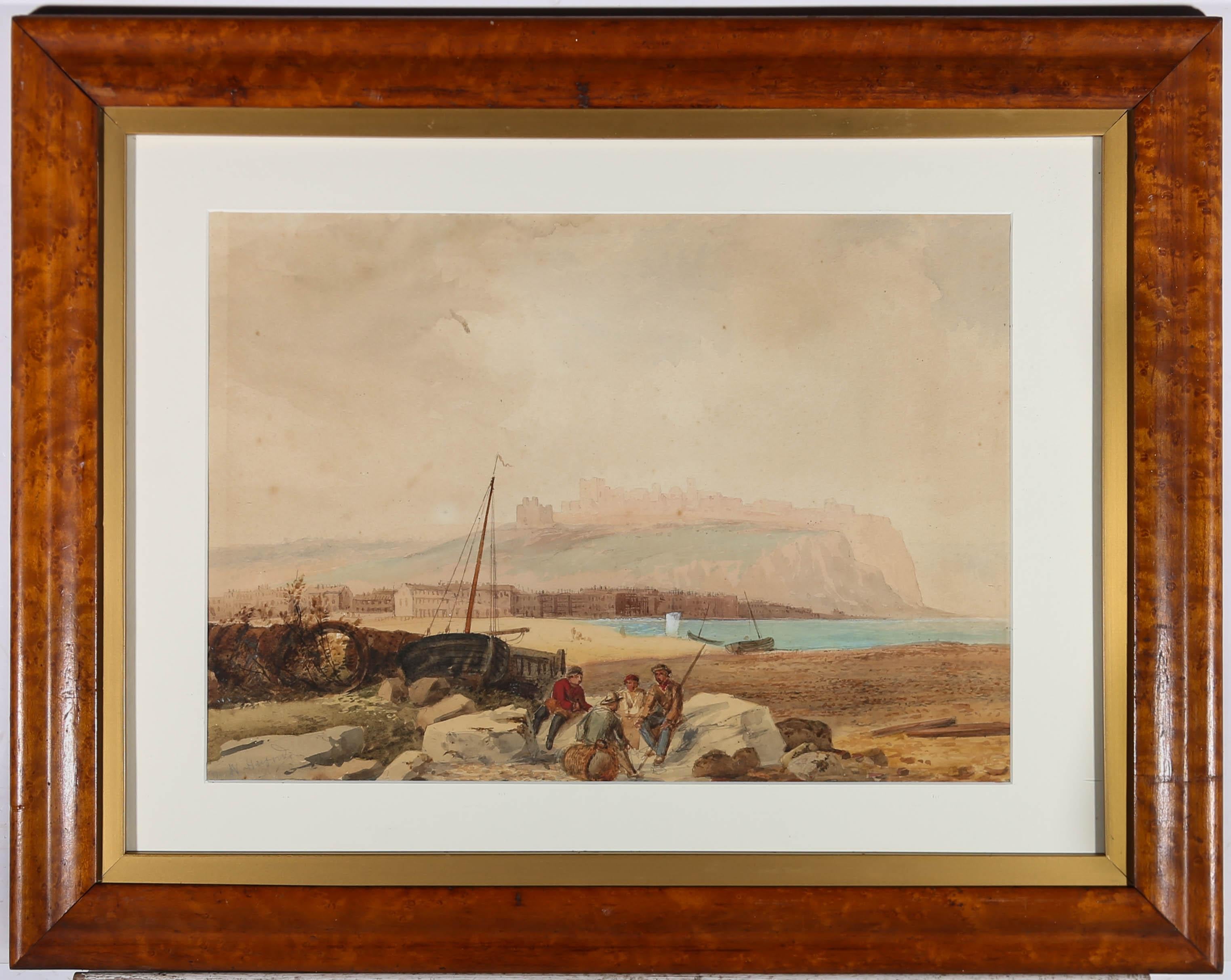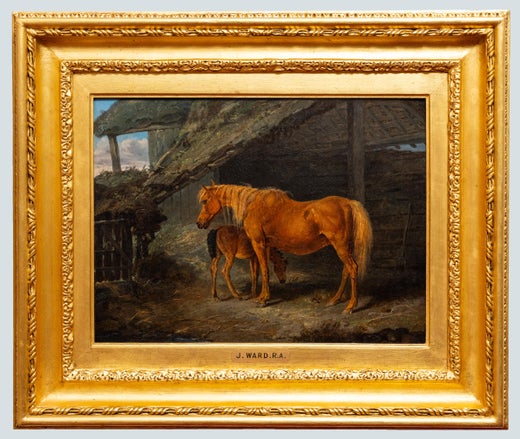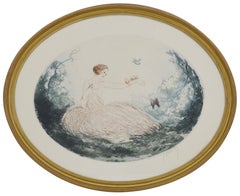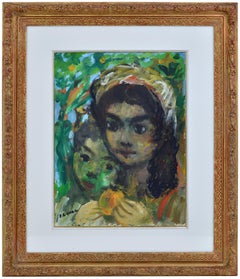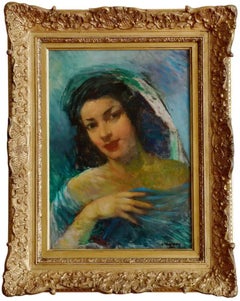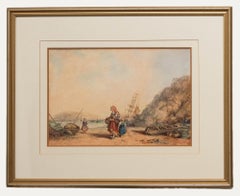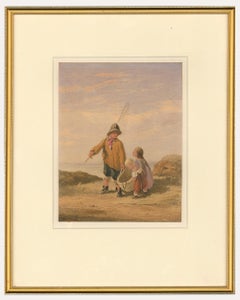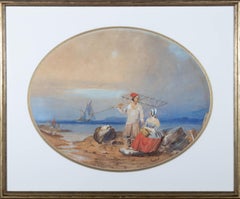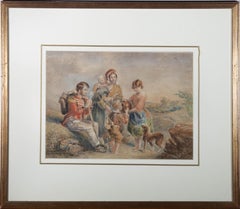James WardJames Ward The Fisherman's Family1830-1840
1830-1840
About the Item
- Creator:James Ward (1769 - 1859, English)
- Creation Year:1830-1840
- Dimensions:Height: 21.46 in (54.5 cm)Width: 26.58 in (67.5 cm)Depth: 0.6 in (1.5 cm)
- Medium:
- Movement & Style:
- Period:
- Condition:
- Gallery Location:Saint Amans des cots, FR
- Reference Number:1stDibs: LU1088215015552
James Ward
James Ward was influenced by many people, but his career is conventionally divided into two periods: until 1803, his single greatest influence was his brother in law George Morland; from that time, it was Rubens. From 1810 or so, Ward started to paint horses within landscapes; slightly later, he turned to very large-scale landscapes, of which Gordale Scar (Tate, London), completed in 1814 or 1815 and depicting Gordale Scar (Yorkshire) as an example of the sublime, is considered his masterpiece and a masterpiece of English Romantic painting. He was one of the outstanding artists of the day, his singular style and great skill set him above most of his contemporaries, markedly influencing the growth of British art. Regarded as one of the great animal painters of his time, Ward produced history paintings, portraits, landscapes and genre. He started as an engraver, trained by William, who later engraved much of his work. The partnership of William and James Ward produced the best that English art had to offer, their great technical skill and artistry having led to images that reflect the grace and charm of the era. He was admitted for membership into the Royal Academy in 1811. One of Ward's best-known paintings, The deer stealer was commissioned in 1823 for the sum of 500 guineas by Ward's patron Theophilus Levett. When the work was finished, Levett pronounced himself delighted with the results and consequently raised the remuneration to 600 guineas. Subsequently Ward was said to have been offered 1,000 guineas for the painting by 'a nobleman,' which he declined. The painting now hangs at Tate in London.
- ShippingRetrieving quote...Shipping from: Saint Amans des cots, France
- Return Policy
More From This Seller
View AllLate 19th Century Figurative Prints
Lithograph
1950s Expressionist Figurative Paintings
Canvas, Oil
1930s Expressionist Figurative Paintings
Paper, Oil
1920s Modern Figurative Paintings
Canvas, Oil
1950s Naturalistic Figurative Paintings
Canvas, Oil
1920s Art Deco Nude Drawings and Watercolors
Watercolor
You May Also Like
19th Century Abstract Expressionist Figurative Drawings and Watercolors
Watercolor
Early 19th Century Figurative Drawings and Watercolors
Watercolor
19th Century Figurative Drawings and Watercolors
Watercolor
19th Century Figurative Drawings and Watercolors
Watercolor
Late 19th Century Figurative Drawings and Watercolors
Watercolor
19th Century Figurative Drawings and Watercolors
Watercolor
